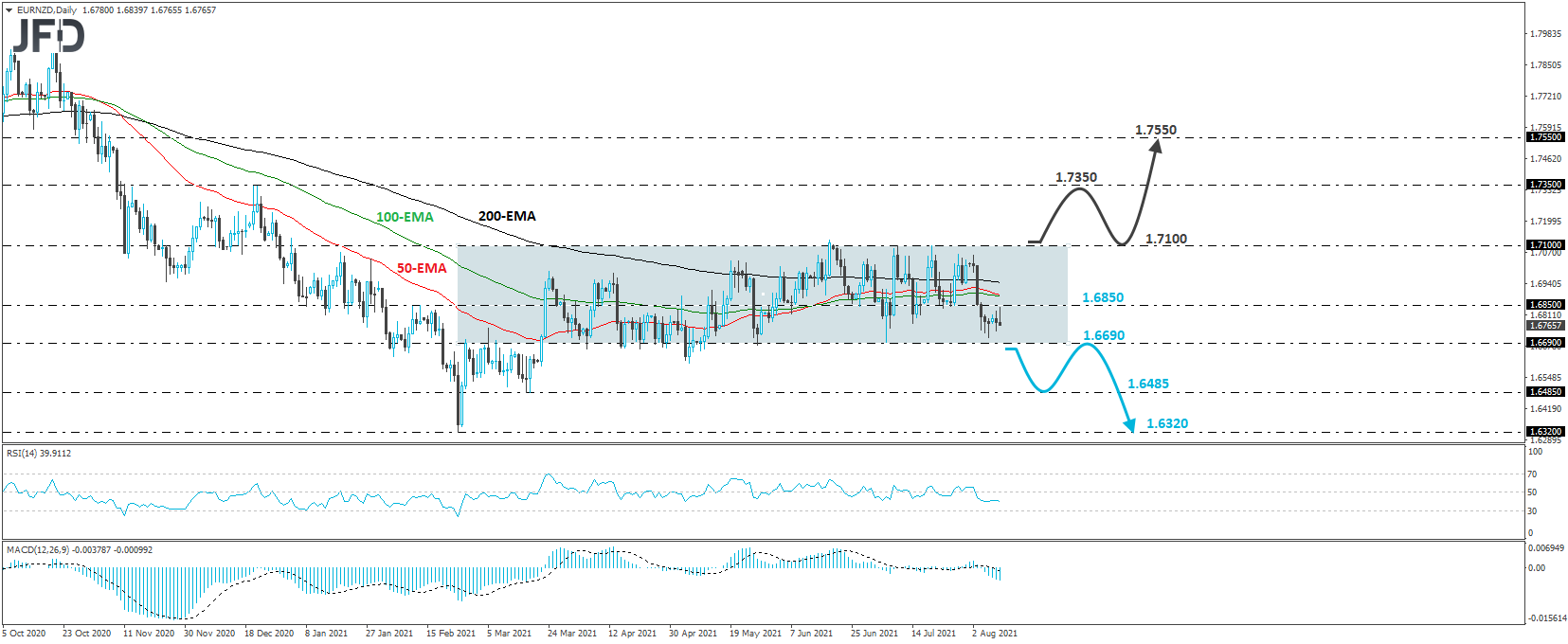EUR/NZD fell sharply last Tuesday, breaking below the 1.6850 barrier. However, since then the trading activity has been consolidative, slightly above the key support of 1.6690, which has been acting as the lower bound of the sideways range that’s been containing most of the price action since Mar. 22. The upper bound of that range is at around 1.7100. Overall, as long as the pair continues to trade within the range, we will hold a flat stance.
Having said that though, the fundamental outlook suggests that there is more chance for the pair to exit the range to the downside rather than to the upside. At its latest meeting, the ECB changed its forward guidance to signal that interest rates are now likely to stay low for longer, while the RBNZ is expected to hit the hike button as soon as at the next gathering. Thus, this monetary policy divergence may add some extra pressure to this exchange rate.
A clear and decisive dip below 1.6690 would confirm a forthcoming lower low and may pave the way towards the 1.6485 barrier, which is marked as a support by the low of Mar. 17. If the bears are not willing to stop there and manage to push the action lower, then we could experience declines towards the low of Feb. 24, at 1.6320.
Taking a look at our daily oscillators, we see that the RSI lies below 50, but points sideways, while the MACD lies below both its zero and trigger lines. Both indicators detect downside speed, adding to our view that EUR/NZD could exit its recent range through its lower bound, but the fact that the RSI is flat supports the notion to wait for a confirmation break.
In order to turn our eyes to the upside, we would like to see a break above the upper bound of the aforementioned range, at 1.7100. This would confirm a forthcoming higher high on the daily chart and may see scope for advances towards the 1.7350 area, defined as a resistance by the highs of Dec. 21 and 22, the break of which could extend the gains towards the 1.7550 barrier, near the high of Nov. 6.
